10 Most Sustainable T-Shirt Brands: The Conscious Consumer’s Guide
Impactful Ninja is reader-supported. When you buy through links on our site, we may earn an affiliate commission.
Learn more
Learn more
.
Hey fellow impactful ninja ? You may have noticed that Impactful Ninja is all about providing helpful information to make a positive impact on the world and society. And that we love to link back to where we found all the information for each of our posts. Most of these links are informational-based for you to check out their primary sources with one click. But some of these links are so-called "affiliate links" to products that we recommend. First and foremost, because we believe that they add value to you. For example, when we wrote a post about the environmental impact of long showers, we came across an EPA recommendation to use WaterSense showerheads. So we linked to where you can find them. Or, for many of our posts, we also link to our favorite books on that topic so that you can get a much more holistic overview than one single blog post could provide. And when there is an affiliate program for these products, we sign up for it. For example, as Amazon Associates, we earn from qualifying purchases. First, and most importantly, we still only recommend products that we believe add value for you. When you buy something through one of our affiliate links, we may earn a small commission - but at no additional costs to you. And when you buy something through a link that is not an affiliate link, we won’t receive any commission but we’ll still be happy to have helped you. When we find products that we believe add value to you and the seller has an affiliate program, we sign up for it. When you buy something through one of our affiliate links, we may earn a small commission (at no extra costs to you). And at this point in time, all money is reinvested in sharing the most helpful content with you. This includes all operating costs for running this site and the content creation itself. You may have noticed by the way Impactful Ninja is operated that money is not the driving factor behind it. It is a passion project of mine and I love to share helpful information with you to make a positive impact on the world and society. However, it's a project in that I invest a lot of time and also quite some money. Eventually, my dream is to one day turn this passion project into my full-time job and provide even more helpful information. But that's still a long time to go. Stay impactful,Affiliate Disclosure
Why do we add these product links?
What do these affiliate links mean for you?
What do these affiliate links mean for us?
What does this mean for me personally?
![]()
Amid growing concerns about the textile industry’s environmental impact, there is pressure to find greener clothes for your wardrobe, from special occasion dresses to everyday T-shirts. Unfortunately, fashion greenwashing makes it harder for you and all other consumers to figure out which clothing brands offer the most eco-friendly garments. So, we had to ask: Which are the most sustainable T-shirt brands?
The most sustainable T-shirt brands are The Classic T-Shirt Company, The Good Tee, and ALTER X Company, which prioritize organic fabrics while employing full traceability and responsible production. In addition, FM 669 and Harvest & Mill reduce carbon emissions with relatively short supply chains.
Suppose you’re on the hunt for an ideal T-shirt or two to add to your wardrobe without negatively impacting the soil, the water, the animals, and other people. In that case, there is a brand for you. So, let’s keep reading to learn more about the most sustainable T-shirt brands and how they ensure sustainable, ethical practices.
Here’s How We Selected the Most Sustainable T-Shirt Brands
The fast fashion industry has pushed for daily garments like T-shirts to be trend-dependent and easily replaceable, leading to the huge adverse environmental impacts of making and landfilling these garments, especially when made with certain high-impact materials conventional cotton or chemically intensive viscose.
“Sustainable: The ability to be maintained at a certain rate or level | Avoidance of the depletion of natural resources in order to maintain an ecological balance”
Oxford Dictionary
The brands on this list were chosen based on their commitment and actions to promote sustainable practices while reducing the environmental impacts of the textile industry.
They are transparent about their materials, processes, and workforce management within their supply chain.
Some brands focus their efforts on reducing waste and optimizing natural resources while others strive to reduce the carbon footprint of their clothes.
All of these brands share the commitment to reshape the textile industry toward a more sustainable and Earth-friendly sector.
These Are the 10 Most Sustainable T-Shirt Brands
Most Sustainable T-Shirt Brands
Overall, these T-shirt brands are sustainable. Yet, they take various approaches to reduce environmental impacts and uphold ethical standards. Let’s dive into each brand and find out more.
The Classic T-Shirt Company: Organic Cotton T-Shirts Made in the US
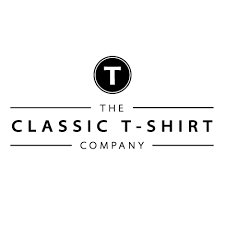
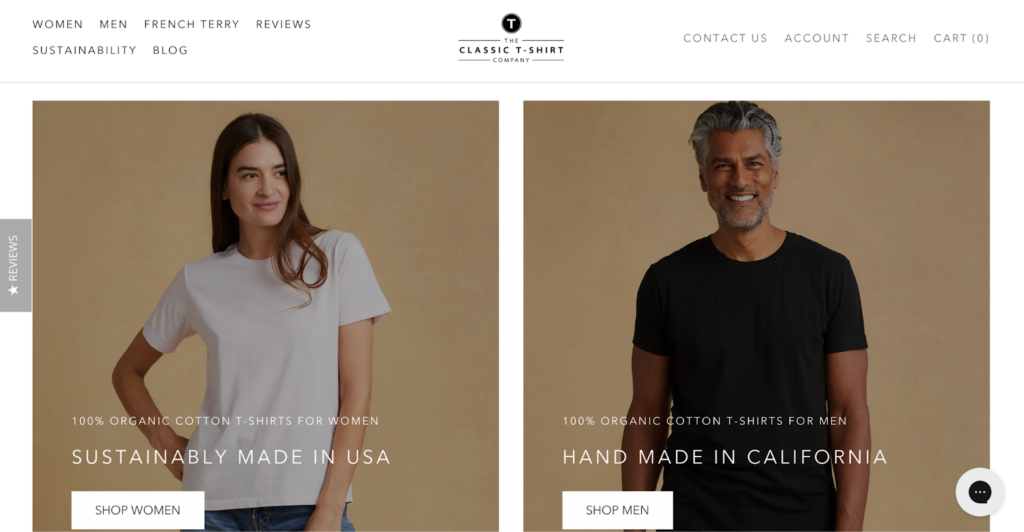
“The Classic T-shirt company was founded to shake up the fashion industry by creating ethically made luxury fashion items, starting with a full range of Organic Cotton T-shirts for men and women that we couldn’t be prouder of.”
The Classic T-Shirt Company
🌎
How do they ensure their sustainability?
The Classic T-Shirt Company ensures their sustainability by sourcing eco-friendly materials and producing locally. Firstly, they use a high proportion of organic cotton cultivated organically in India according to the Global Organic Textile Standard (GOTS). For example, their women’s Short Box Tee Crew Neck T-shirt is made with 100% organic cotton. Furthermore, The Classic T-Shirt Company is committed to plastic-free shipping. All their orders are sent in 100% recycled and recyclable packaging. Secondly, they produce locally in California to reduce their carbon footprint.
🌐
How do they ensure their ethics?
The Classic T-Shirt Company holds their final production stage in Los Angeles, California. They also pay living wages to all of their workers.
🤝
Are they part of any giving-back programs?
The Classic T-Shirt Company pledges 1% of their equity, profit, and time to causes they believe in, including safe water, tree planting, and ocean cleanup. The brand supports changemakers like Water for People, the Armenia Tree Project, and The Ocean Cleanup.
🛍️
What is their product range?
- Best for: menswear, womenswear
- Product range: short-sleeve T-shirts, long-sleeve T-shirts, pants, shorts
- Price range: $$
- Size range: XS–XXXL
The Good Tee: Responsibly-Made Fashion Essentials
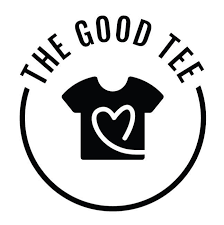

“Unlike the wear-today/replace tomorrow lifespan of a fast fashion garment, The Good Tee strives to enhance the lifespan of its products by emphasizing quality in all things – from fabric to thread and trims.”
The Good Tee
🌎
How do they ensure their sustainability?
The Good Tee ensures sustainability by sourcing eco-friendly materials and measuring their environmental impact to move toward net zero emissions. Firstly, they use a high proportion of GOTS-certified organic cotton to make their fabric, saving 71% water and 62% energy usage (compared with conventional cotton). Additionally, The Good Tee sources exclusively AZO-free and low-impact dyes from dye houses with a water effluent treatment plant that recycles and reuses water. The brand also considers the biodegradability and sustainability of their trims, including coconut and seashell buttons (instead of plastic buttons), biodegradable tags made of cotton or recycled paper, and YKK NATULON® zippers made from post-consumer chemically recycled polyester, which is perpetually recyclable. Regarding packaging, The Good Tee uses biodegradable bags and recycled boxes. Secondly, they have taken their first steps toward net zero by calculating their scope 1, 2, and 3 GHG emissions.
🌐
How do they ensure their ethics?
The Good Tee ensures their ethics by being fully transparent about their supply chain. They openly share their supply chain map, from farms to production to logistics. The brand exclusively sources Fairtrade cotton cultivated in India and manufactures in Fairtrade-certified factories, ensuring fair working conditions and payments for both farmers and textile workers while protecting ecosystems. They also audit their suppliers. Additionally, The Good Tee has a Code of Conduct that covers all of the ILO’s Fundamental Principles and Rights at Work.
🤝
Are they part of any giving-back programs?
The Good Tee advocates for the rights of farmers and textile workers by adhering to supply chain transparency and fair trade practices. Their manufacturing partner, Assisi Garments, invests in the community by supporting various social projects, including a nursing home and children’s orphanage in South India.
🛍️
What is their product range?
- Best for: womenswear, menswear, kidswear
- Product range: short-sleeve T-shirts, long-sleeve T-shirts, ¾-sleeve T-shirts, sweaters, dresses, tanks, bottoms,
- Price range: $$
- Size range: S–XL
ALTER X Company: Organic T-Shirts Made for People, Planet, and Purpose

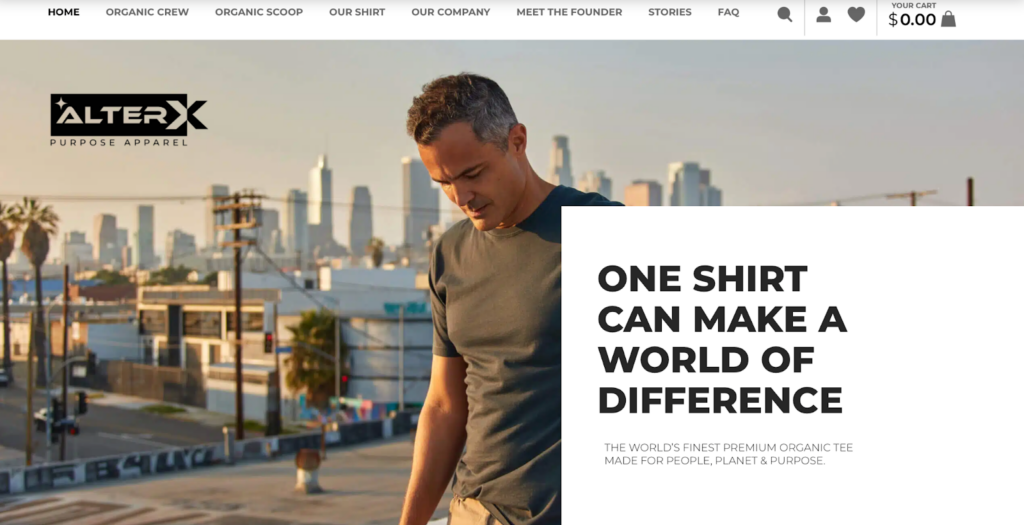
“Change begins with making one planet and people a positive choice. We can make a world of difference and together we will ALTER everything.”
ALTER X Company
🌎
How do they ensure their sustainability?
ALTER X Company ensures their sustainability by sourcing low-impact materials, reducing waste, and leaving a zero carbon footprint. Firstly, the ALTER X Company uses plant-based fibers to make their shirts. Their fabric comprises 40% organic cotton and 60% viscose made with easily renewable hemp fibers and is certified organic with the Organic Content Standard (OCS). Additionally, they use organic, non-toxic dyes for all their products. Secondly, they minimize waste by running small-batch production. Lastly, they manufacture their products closer to home to reduce the climate impact of long-distance shipping while offsetting carbon emissions to achieve zero carbon footprint.
🌐
How do they ensure their ethics?
ALTER X Company is transparent about their manufacturing partners, including the mill, the dye house, and the cut-and-sew factory. Their final production stage happens in California and is entirely certified with the Social Accountability International – SA8000. Additionally, the X LABEL printed on their shirts provides customers with insight and information.
🤝
Are they part of any giving-back programs?
ALTER X Company donates 10% of every shirt purchased to alleviate hunger, human trafficking, and mental health.
🛍️
What is their product range?
- Best for: womenswear, menswear
- Product range: T-shirts
- Price range: $$
- Size range: S–XL
FM 669: Organic Cotton T-Shirts Made in an Exclusively US-Based Supply Chain


“All of our organic cotton is grown, spun and knitted in the USA. Each garment is sewn in the New York City garment district. ”
FM 669
🌎
How do they ensure their sustainability?
FM 669 ensures their sustainability by sourcing eco-friendly materials, implementing low-impact manufacturing practices, and reducing their carbon emissions. Firstly, they use a high proportion of organic cotton certified under the United States Department of Agriculture’s National Organic Program (USDA-NOP) and the Global Organic Textile Standard (GOTS). Secondly, FM 669 works with farms that practice regenerative agriculture like cover crops and rotation crops. 75% of the organic farms they source from are completely rainfed, saving irrigation water. Regarding packaging materials, FM 669 opts for certified home compostable bags and recyclable mailers containing 25% post-consumer recycled content. Further down the life-cycle in the manufacturing stage, they use non-toxic hydrogen peroxide to achieve white fabrics and low-impact, fiber-reactive dyes for colored fabrics. All finishing steps occur in a closed-loop system where the water is recycled. Wastewater is then treated at the plant to ensure nothing environmentally harmful remains in the effluent. They also produce small runs of styles to avoid textile waste. Thirdly, FM 669 reduces their transporting carbon footprint by setting up a supply chain based entirely within the US, from farming to spinning to knitting the garments. And finally, FM669 uses the Planet app to enable carbon-neutral shipping. Consumers can offset the CO2 emissions from order shipping entirely with vetted climate solutions.
🌐
How do they ensure their ethics?
FM 669 traces most of their supply chain. The production stage is undertaken in the US, a medium-risk country for labor abuse.
🤝
Are they part of any giving-back programs?
FM 669 is not known to be part of any giving-back programs.
🛍️
What is their product range?
- Best for: womenswear, menswear
- Product range:T-shirts, long-sleeve T-shirts, tank tops
- Price range: $$$
- Size range: XS–XL
Harvest & Mill: Carbon-Neutral Apparel Made in Organic and Traceable US-Based Supply Chain
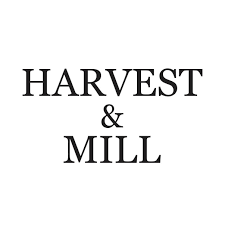
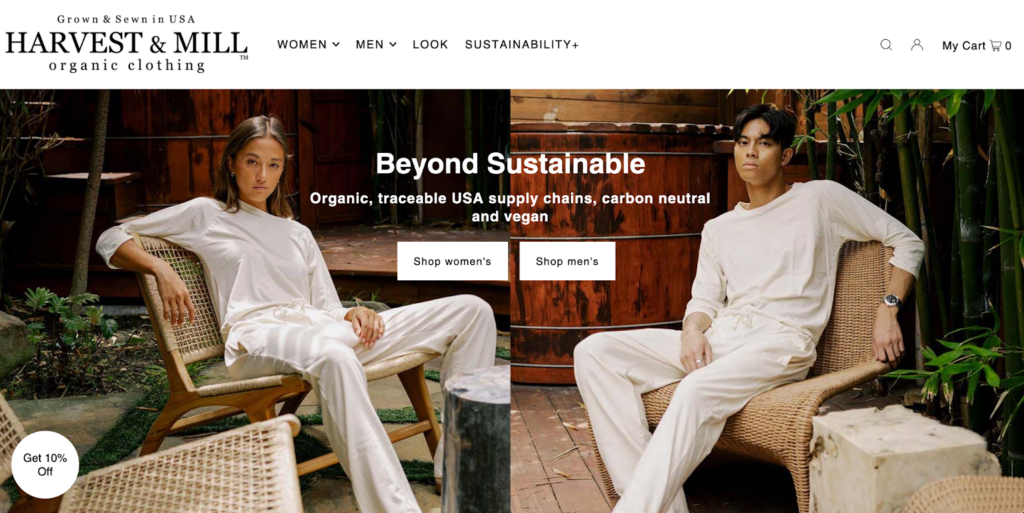
“We use zero fabric wholesalers or brokers and we use only 100% USA grown organic cotton yarns – because that is the only way to have true transparency in fashion and fabric chemical content.”
Harvest & Mill
🌎
How do they ensure their sustainability?
Harvest & Mill’s sustainability efforts focus on using low-impact materials, minimizing textile waste, and achieving carbon neutrality. Firstly, they source eco-friendly materials, from fibers to dyestuff to packaging. In particular, they source a high proportion of organic cotton, grown and milled in the US, for their socks, bottoms, and tops. They also opt for low-impact, natural, and non-toxic dyestuff for some of their apparel while eliminating dyes altogether for their sock collection, their Organic Heirloom Brown Collection, and all their natural-white joggers and tops. Regarding packaging and shipping, Harvest & Mills uses plastic-free, reusable, recyclable, and easily compostable materials. Secondly, they minimize textile waste by designing patterns that reduce off-cuts while repurposing or recycling all extra fabrics. Thirdly, they achieve carbon neutrality by reducing and offsetting their emissions. Beyond that, they hold their supply chain entirely in the US, shortening the transporting distances (by five times). And lastly, they offset all their carbon emissions, including production, supply chain transportation, office operation, and all orders they ship out.
🌐
How do they ensure their ethics?
Harvest & Mill traces their whole supply chain and visits their suppliers regularly. They state that from the farm workers to the factory workers, everyone who works on Harvest & Mill clothing receives a fair wage, safe working conditions, the legally protected right to organize, and protection from discrimination.
🤝
Are they part of any giving-back programs?
Harvest & Mill is a member of Fibershed, a nonprofit that develops regional fiber systems that build soil and protect the health of Earth’s biosystems.
🛍️
What is their product range?
- Best for: womenswear, menswear
- Product range: shirts, T-shirts, pants, shorts, socks
- Price range: $$$
- Size range: S–XL
Neem: Men’s Tops From a Carbon-Neutral Production System


“We have measured the waste, energy, GHG, and water usage through a life cycle analysis, to fully understand the environmental impact of what we are producing.”
Neem
🌎
How do they ensure their sustainability?
Neem prioritizes sustainability by sourcing a high proportion of low-impact materials, offsetting their carbon emissions, and striving to close the loop in fashion. Firstly, their clothes are made with recycled, regenerative, and renewable fibers, including recycled cotton, regenerative cotton, and regenerative ZQ merino wool. Secondly, they aim to reduce their climate impact by reducing and offsetting their carbon footprint. Neem partners with Green Story to identify ways to cut down emissions, including using renewable energy in the supply chain and keeping manufacturing close to their base. Furthermore, they offset all their production emissions by way of three charities: Harmalik Wind Power Plant in Turkey, Reforestation in Peru, and Safe Community Water in Rwanda. Their end-to-end production system is 100% carbon neutral. Lastly, Neem strives toward fashion circularity by using recycled fibers, offering clothes repair services, and recycling clothes from any brands.
🌐
How do they ensure their ethics?
Neem traces most of their supply chain. Specifically, their recycled cotton, regenerative cotton, and merino wool products are fully traceable from farming or recycling/shredding to weaving and apparel making. Regarding their climate impact, they share the life-cycle water usage, energy demand, and carbon emissions of their shirts so that customers know the impact when buying their products.
🤝
Are they part of any giving-back programs?
Neem is not known to be part of any giving-back programs.
🛍️
What is their product range?
- Best for: menswear
- Product range: overshirts, comfort shirts, shirts, popover, T-shirts, polos, accessories
- Price range: $$$
- Size range: S–XXL
Patagonia: Everyday Wear for Those Who Care
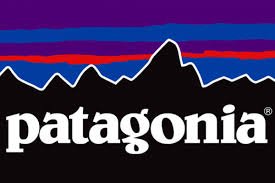

“Together, we can prioritize purpose over profit and protect this wondrous planet, our only home.”
Patagonia
🌎
How do they ensure their sustainability?
Patagonia puts sustainability at the center of their operation. They work to reduce, rather than simply offset, carbon emissions where it matters the most: in the supply chain and material manufacturing. They reduce their carbon footprint by removing high-impact virgin fossil-based fibers from their collections, using “Environmental Profit and Loss” to guide their production decision, and helping their suppliers to cut emissions. For example, Patagonia’s fall 2023 collection was made up mostly of preferred materials (91% by fabric weight), including Regenerative Organic Certified fibers, hemp, man-made cellulose fibers, recycled cotton, and recycled polyester. On top of that, Patagonia’s Worn Wear Program encourages customers to repair and recycle their products, extending the textile lifecycle and reducing waste. Lastly, Patagonia is certified as a B Corporation and a Bluesign® brand.
🌐
How do they ensure their ethics?
Patagonia commits to fair trade practices. Through the partnership with Fair Trade USA, they currently produce 86% of their clothes in 20 Fair Trade Certified™ factories. Patagonia pays a premium for every item produced in such factories, accumulating in a fund for workers to use in their chosen community projects, whether in healthcare or parent support or to withdraw as a cash bonus. Additionally, they have various social responsibility programs to prevent harm and create positive impacts on the lives of apparel workers in their supply chain. These include the Fair Labor Association, the Living Wage Program, the Migrant Workers Program, and the Responsible Purchasing Practices. Patagonia is also fully transparent about the locations of their facilities and suppliers.
🤝
Are they part of any giving-back programs?
Since 1985, Patagonia has pledged 1% of sales annually to environmental causes. They have awarded over $89 million in cash and kind donations to domestic and international grassroots environmental groups, making a difference in their local communities. In 2022, the founder of Patagonia gave away his family’s ownership of the company to the newly created Patagonia Purpose Trust and the not-for-profit organization Holdfast Collective, ensuring that all future profits from the company are used to fight the climate and extinction crisis.
🛍️
What is their product range?
- Best for: kidswear, menswear, womenswear
- Product range: shirts, pants, jackets, blazers, hoodies, sweatshirts, T-shirts, shorts, plus-size
- Price range: $$$
- Size range: XXS–XXXL
Allbirds: Simple and Comfortable Footwear Made With Nature-Based Materials


“Reducing the carbon footprint of our products is at the heart of everything we do.”
Allbirds
🌎
How do they ensure their sustainability?
Allbirds ensures sustainability by committing to a concrete plan to achieve net zero carbon by 2030 through meticulously measuring their carbon footprint and working to reduce the emissions beyond carbon neutrality while offsetting the current emissions to operate as a carbon-neutral business. They rely on renewable materials, regenerative agriculture, and responsible energy to reduce their carbon footprint. Specifically, Allbirds sources natural and recycled fabrics to replace petroleum-based synthetic textile materials. The brand even invented their own nature-based alternative called SweetFoam®, their shoe sole material derived from the world’s first carbon-negative green EVA (ethylene-vinyl acetate). They’ve also invested in novel solutions, like Plant Leather, a 100% natural, plant-based leather. Additionally, more than 60% of their merino wool currently comes from regenerative agriculture, which has the potential to reverse climate change while promoting biodiversity. Specifically, they combine natural and plant-based fabrics (merino wool, organic cotton, TENCEL™) with recycled synthetic fabrics in their socks. Further down the life-cycle, Allbirds actively reduces their carbon footprint in manufacturing and transporting by using renewable energy in their “owned & operated” facilities and their finished goods manufacturers, shipping by boats, and reducing 40% packaging material by using one post-consumer recycled cardboard as a 2-in-1 shoe box/shipping box. In spring 2024, Allbirds plans to launch M0.0NSHOT—a net zero carbon shoe (a standard sneaker has an average footprint of about 14 kg CO2 eq). Lastly, they encourage buying and selling slightly imperfect and gently used Allbirds products on Allbirds ReRun™ to extend the products’ life-cycle.
🌐
How do they ensure their ethics?
Allbirds has a Supplier Code of Conduct, drawing upon ILO Core Labor Standards to ensure safe working conditions, respect and dignity for workers, and environmentally responsible manufacturing processes in their supply chain. On top of that, they require independent, third-party social and environmental audits of their Tier 1 suppliers. They also strive for transparency and traceability in their supply chain: 100% of their Tier 1 and Tier 2 suppliers are currently mapped with a target to reach 100% supply chain traceability by 2025. Additionally, their Animal Welfare Policy ensures their merino wool is held to high farming standards, land management, and animal welfare. Their merino wool is also certified by ZQ Merino, covering sustainability and ethics from farm to fashion.
🤝
Are they part of any giving-back programs?
Allbirds donates slightly used shoes returned by customers to Soles4Souls, an organization that helps to empower people living in poverty by creating jobs for them. During the COVID-19 pandemic, Allbirds supported healthcare workers by donating shoes and running a “buy one, give one” option, enabling customers to get involved and show appreciation for those making a difference.
🛍️
What is their product range?
- Best for: womenswear, menswear, kidswear
- Product range: shoes, socks
- Price range: $$
- Size range: XS–XXL
Tentree: A Lifestyle Clothing Brand That Plants Trees for Every Item Purchased

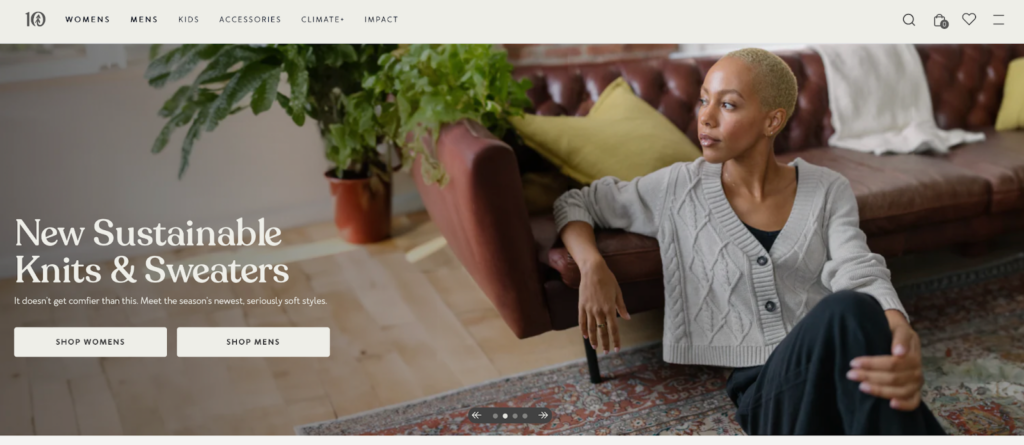
“We believe the future of business is restorative.”
Tentree
🌎
How do they ensure their sustainability?
Tentree ensures sustainability by planting trees, promoting circularity, opting for low-impact fabrics, and attaining responsible packaging. Since their inception, they have planted more than 100,000,000 trees, which helps regenerate ecosystems, capture carbon, and provide forestry jobs in communities around the world. Together with textile recycler SuperCircle and resale guru Treet, Tentree has created an integrated solution to resell or recycle pre-loved Tentree clothing items, keeping them in circulation and out of landfills. Tentree also uses eco-friendly fabrics and blends, including organic cotton, hemp, recycled polyester, and TENCEL™. Specifically, their eco-friendly socks are made with organic cotton and recycled polyester. Regarding packaging, they have replaced all single-use plastics with FSC-certified and 100% recycled paper. Finally, they have B Corporation and Climate Neutral certifications.
🌐
How do they ensure their ethics?
Tentree enforces fair labor practices by collaborating only with manufacturers and suppliers that guarantee a safe and respectful environment for their employees. They regularly audit their partner facilities to ensure compliance with their Code of Conduct and international labor standards. Part of their supply chains is certified by organizations that protect workers, such as Fair Wear Foundation, Global Organic Textile Standard, Sedex Members Ethical Trade Audit, and Worldwide Responsible Accredited Production – WRAP. Additionally, Tentree commits to protecting forests through their paper, packaging, and fabric choices.
🤝
Are they part of any giving-back programs?
Giving back is a cornerstone of Tentree’s mission. They plant 10 trees worldwide for every item purchased, contributing to reforestation and combating climate change. In 2022 alone, their customers helped plant over 22 million trees across nine countries, restoring over 2,000 hectares of terrestrial forests, over 1,000 hectares of coastal mangrove forests, and hundreds of hectares of marine land.
🛍️
What is their product range?
- Best for: kidswear, menswear, womenswear
- Product range: T-shirts, tank tops, shirts, sweaters, cardigans, dresses, pants, hoodies, dresses, shorts, skirts, joggers, jackets, coats, underwear
- Price range: $$
- Size range: XXS–XXL
MATE the Label: Clean From Seed to Skin


“To provide people everywhere with essentials that are clean from seed to skin.”
MATE the Label
🌎
How do they ensure their sustainability?
MATE the Label ensures sustainability by sourcing low-impact fibers, reducing carbon footprints, and recycling. Specifically, they opt for yarns based on plant fibers, including linen, hemp, and climate-beneficial cotton. Furthermore, they use non-toxic dyes to color their apparel. Regarding their carbon footprint, MATE the Label manufactures locally (within 15 miles of their office) to reduce transportation emissions. The brand diverts their textile waste (pre- and post-consumer) into making new products. They also have B Corporation and Climate Neutral certifications.
🌐
How do they ensure their ethics?
MATE the Label has a Code of Conduct covering some ILO Four Fundamental Freedoms principles. Specifically, they do final production in US factories where they have banned, since day 1, the piece rate pay—a practice that often leads to wages below minimum wage and unsafe working conditions. They commit to creating safe, comfortable, and fair working environments for everyone in their supply chain, including farmers, garment workers, and recyclers. They also make regular visits to their suppliers.
🤝
Are they part of any giving-back programs?
In 2021, MATE the Label donated 1% of sales to nonprofit partners that are committed to saving the planet. On Giving Tuesday in 2021, they upped the donation from 1% of every purchase to 5%. Since their partnership with BEAM Impact, MATE the Label’s customers can choose which organizations they would like their donations to go to.
🛍️
What is their product range?
- Best for: minimalistic, versatile clothes for women
- Product range: sweaters, dresses, pants, hoodies, sweatshirts, maternity wear, blouses, T-shirts, jumpsuits, underwear
- Price range: $$
- Size range: XS–XL
Why Is It Important to Buy Products Made of More Sustainable Fabrics
It is important to buy products made of more sustainable fabrics because a sustainable textile industry has a lower carbon footprint, helps save natural resources, and is better for forests, animals, and humans.
Buying Sustainable Fabrics Reduces Your Carbon Footprint
The production of clothing and footwear is estimated to contribute 10% of global greenhouse gas emissions—more than all international flights and shipping combined. If the fashion industry were a country, it would be the fourth largest emitter of carbon dioxide.
One way to reduce the carbon footprint of the clothes you buy is to opt for sustainable fabrics. Sustainable fabrics, which are often made with natural or recycled fibers, have relatively low carbon footprints compared to petroleum-based fabrics. For example, organic cotton made in the US has a carbon footprint of 2.35 kg CO2 (per ton of spun fiber)—a quarter of polyester’s carbon footprint.
Buying Sustainable Fabrics Reduces Demand For Natural Resources and Waste Management
The textile industry uses water and land to grow cotton and other fibers. It is estimated that 79 billion cubic meters of water were used for the sector worldwide in 2015. For example, producing a single cotton T-shirt requires as much water as one person drinks for 2.5 years (2,700 liters of fresh water).
Worse yet, the textile economy is vastly more linear than circular: the largest amount of resources used in clothes ended up in landfill (instead of being recycled to remake clothes). According to a report by the Ellen MacArthur Foundation,
- Less than 3% of materials used in the textile economy in 2015 came from recycled sources.
- In other words, more than 97% of resources used in making clothes are newly extracted.
When clothing items are disposed of within a short period of time—under a year in the case of half of the fast fashion clothes—the natural systems that provide raw materials for fabrics don’t have enough time to recover and regenerate, which could lead to ecological breakdown.
Sustainable fabrics are made with less water and emissions while lasting longer:
- Because they are durable, you don’t need to buy new clothes too often.
- Thus, you help reduce the pressure to extract more resources for making new items.
Similarly, making and consuming sustainable fabrics made with recycled materials reduces the demand for virgin materials while helping tackle waste management.
Buying Sustainable Fabrics Encourages Sustainable Management of Forests
Sustainable plant-based fabrics are made with raw materials from forests and plantations that are sustainably managed, such as complying with FSC standards.
When you buy sustainable plant-based fabrics, you discourage unsustainable forestry practices like illegal logging. You can help reduce deforestation, biodiversity loss, and the effects of climate change.
Buying Sustainable Fabrics Encourages Fairer Treatment of Animals
The fashion industry is rife with animal mistreatment when it comes to making animal-based fabrics like wool or silk. Every year, billions of animals suffer and die for clothing and accessories.
Buying sustainable vegan alternatives can help to reduce the pressure on raising more and more animals to meet the demand for animal-based fabrics while sacrificing their well-being and lives.
Suppose you have to buy fabrics made with, for example, wool or silk; make sure you only choose brands committed to cruelty-free products. In that case, you help advocate better treatments for animals raised within the textile industry.
Using Sustainable Fabrics Encourages Fairer Treatment of Textile Workers
Recent statistics from UNICEF estimated as many as 170 million child laborers worldwide, many of whom were engaged in some form of work in the textile industry. They don’t get paid minimum wages and often work long hours.
When you buy sustainable fabrics from brands transparent about the working conditions at their factories, you discourage the use of child labor and help promote better working conditions for textile workers.
How Can You Generally Buy More Sustainable Fabrics
The key to sustainably buying fabrics is to check on relevant environmental and original certifications.
For natural fabrics:
- Global Organic Textile Standard (GOTS): A globally recognized certification system that ensures a certain threshold of organic content has been met. It covers manufacturing, packaging, labeling, transportation, and distribution (but not what happens in the fields where crops are grown).
- USDA Certified Biobased Product: The USDA BioPreferred® Certification is a voluntary certification offered by the United States Department of Agriculture. The certification identifies products made from plants or other renewable materials.
- Ecolabel: Ecolabel is the official European Union voluntary label recognized worldwide for certified products with a guaranteed, independently verified low environmental impact. The label requires high environmental standards throughout the entire life-cycle: from raw material extraction through production and distribution to disposal. It also encourages companies to develop innovative, durable, easy-to-repair, and recyclable products.
For plant-based semi-natural/semi-synthetic fabrics:
- Forest Stewardship Council: An FSC certification ensures that the wood (or wood-like material) comes from responsibly managed forests that provide environmental, social, and economic benefits.
There are two types of FSC Certification:- FSC Forest Management Certification, with a focus on the origin of the wood—the forest.
- FSC Chain of Custody Certification, which focuses on the path from the forest to the customer’s home.
- Program for Endorsement of Forest Certification: PEFC’s approaches to sustainable forest management are in line with protecting the forests globally and locally and making the certificate work for everyone. Getting a PEFC certification is strict enough to ensure the sustainable management of a forest is socially just, ecologically sound, and economically viable but attainable not only by big but small forest owners.
For recycled fabrics:
- Recycled Claim Standard (RCS): The Textile Exchange RCS was originally developed as an international, voluntary standard that sets requirements for third-party certification of Recycled input and chain of custody.
- The Global Recycled Standard (GRS): The Global Recycled Standard (GRS) is an international, voluntary, full product standard that sets requirements for third-party certification of Recycled Content, chain of custody, social and environmental practices, and chemical restrictions. It can be used for any product with more than 20% recycled material.
For all types of fabrics:
- STeP by OEKO-TEX®: STeP by OEKO-TEX® is an independent certification system for brands, retailers, and manufacturers from the textile and leather industry. It communicates organizational environmental measures, including reducing carbon footprint and water usage.
- OEKO-TEX® Standard 100: OEKO-TEX® labels aim to ensure that products pose no risk to human health (i.e., containing banned chemicals).
Some certifications that are signaling brands’ efforts toward lowered environmental impacts and a circular economy are:
- B Corp Certification: The label B Corp is a certification reserved for for-profit companies. Certified holders are assessed on their social and environmental impacts.
- Cradle2Cradle certification: Cradle2Cradle provides a standardized approach to material circularity. It assesses whether products have been suitably designed and made with the circular economy in mind covering five critical categories: material health, material reuse, renewable energy and carbon management, water stewardship, and social fairness.
Final Thoughts
T-shirts are staples in everyone’s wardrobe, and thus, it is all the more important to get it right when choosing the next one.
By purchasing new or pre-loved T-shirts from brands that commit to sustainability, you support their mission to create a fairer and less harmful textile industry for all lives on Earth.
Here is the list (again) of the most sustainable T-shirt brands:
- The Classic T-Shirt Company
- The Good Tee
- ALTER X Company
- FM 669
- Harvest & Mill
- Neem
- Patagonia
- Allbirds
- Tentree
- MATE the Label
To make your use of these T-shirts even more sustainable, follow these steps:
- Buy second-hand, recycled, or upcycled T-shirts made with low-impact materials.
- Maximize the number of wears between washes and keep your T-shirts as long as possible.
- At the end-of-life of your T-shirts, upcycle the materials to extend their usage and arrange for them to be recycled or properly disposed of.
Stay impactful,

Sources
- Impactful Ninja: How Sustainable Are Cotton Fabrics? A Life-Cycle Analysis
- Impactful Ninja: How Sustainable Are Viscose Fabrics? A Life-Cycle Analysis
- Science Direct: Life-cycle assessment (LCA)
- The Classic T-Shirt Company: Home
- The Good Tee: Home
- ALTER X Company: Home
- FM 669: Home
- Harvest & Mill: Home
- Neem: Home
- Patagonia: Home
- Allbirds: Home
- Tentree: Home
- MATE the Label: Home
- Good On You: Brand Directory | The Classic T-Shirt Company
- Impactful Ninja: How Sustainable Are Organic Cotton Fabrics? A Life-Cycle Analysis
- The Classic T-Shirt Company: ABOUT | HOW IT ALL STARTED
- Global Organic Textile Standard: Home
- The Classic T-Shirt Company: Short Box Tee Crew Neck
- The Classic T-Shirt Company: WHY ORGANIC COTTON T-SHIRTS ARE GOOD FOR YOU & THE EARTH IN 2023
- Pledged 1 percent: Home
- The Classic T-Shirt Company: CHARITIES WE SUPPORT | Made in the USA. Good for the World.
- Water for People
- Armenia Tree Project
- The Ocean Cleanup
- B Corporation: The Good Tee
- Good On You: Brand Directory | The Good Tee
- Global Organic Textile Standard: Home
- Impactful Ninja: How Sustainable Are Organic Cotton Fabrics? A Life-Cycle Analysis
- The Good Tee: THE GREENEST TEE EVER MADE
- Impactful Ninja: How Sustainable Are Cotton Fabrics? A Life-Cycle Analysis
- YKK FASTENING: NATULON® Mechanically Recycled Zippers
- The Good Tee: White Paper | The Good Tee
- The Good Tee: Our Ethical Supply Chain | Transparency
- Fairtrade International: Home
- The Good Tee: Why Fair Trade?
- The Good Tee: Code of Conduct
- International Labour Organization: ILO’s Declaration on Fundamental Principles and Rights at Work
- Impactful Ninja: How Sustainable Are Organic Cotton Fabrics? A Life-Cycle Analysis
- Impactful Ninja: How Sustainable Are Viscose Fabrics? A Life-Cycle Analysis
- Science Direct: Hemp Fiber
- ALTER X Company: PRODUCT CERTIFICATIONS
- Textile Exchange: Organic Content Standard
- ALTER X Company: THE FUTURE OF FAIR FASHION IS NOW.
- Good On You: Brand Directory | ALTER X Company
- ALTER X Company: Carbon Offset
- ALTER X Company: The Label
- SA International: SA8000
- Good On You: Brand Directory | FM 669
- Impactful Ninja: How Sustainable Are Organic Cotton Fabrics? A Life-Cycle Analysis
- USDA: National Organic Program
- Global Organic Textile Standard: Home
- FM 669: Our Process
- Shopify: Planet | Carbon – Neutral Shipping
- Harvest & Mill: Men‘s T-shirts
- Harvest & Mill: Women‘s T-shirts
- Good On You: Brand Directory | Harvest & Mill
- Impactful Ninja: How Sustainable Are Organic Cotton Fabrics? A Life-Cycle Analysis
- Harvest & Mill: Sustainability
- Harvest & Mill: Organic Heirloom Brown Collection
- Fibershed: Harvest & Mill
- Neem: The World’s Best T-shirts
- Good On You: Brand Directory | Neem
- Neem: Planet friendly
- Impactful Ninja: How Sustainable Are Recycled Cotton Fabrics? A Life-Cycle Analysis
- Neem: Regenerative Cotton
- Neem: ZQ Merino Wool
- Discover ZQ: ZQ Merino
- Impactful Ninja: How Sustainable Are Merino Wool Fabrics? A Life-Cycle Analysis
- Green Story: Home
- Simpli Zero: Harmalik Wind Power Plant
- Simpli Zero: Reforestation
- Simpli Zero: Safe Community Water
- Neem: Recycled Cotton
- Neem: Clothes Repair Service
- Neem: Wear Well Scheme
- Patagonia: Men‘s T-shirts
- Patagonia: Women‘s T-shirts
- Patagonia: The Climate Crisis Is Our Business
- Patagonia: The Climate Crisis Is Our Business | No More Virgin Petroleum Fibers by 2025
- Patagonia: The Climate Crisis Is Our Business | Is Each Product Worth the Environmental Cost?
- Patagonia: The Climate Crisis Is Our Business | Help Suppliers Cut Emissions
- Patagonia: Environmental Responsibility
- Patagonia: Regenerative Organic Certified fibers
- Patagonia: Hemp
- Patagonia: Man-made Cellulose Fibers
- Patagonia: Recycled Cotton
- Patagonia: Recycled Polyester
- Patagonia: WORN WEAR
- B Corporation: Patagonia
- Bluesign: Home
- Fair Trade: Home
- FAIR TRADE CERTIFIED: Improving Lives, Protecting the Planet.
- Patagonia: Social Responsibility
- Patagonia: Fair Trade
- Patagonia: Fair Labor Association
- Patagonia: Living Wage Program
- Patagonia: Migrant Workers Program
- Patagonia: Responsible Purchasing Practices
- Patagonia: Where We Do Business
- Patagonia: 1% for the Planet
- Forbes: Yvon Chouinard And The Patagonia Purpose Trust— What Is It And Will It Work?
- Fast Company: Patagonia uses capitalism to save the planet with the Holdfast Collective
- The New York Times: Patagonia Founder Gives Away the Company to Fight Climate Change
- Allbirds: Men‘s Tops
- Allbirds: Women‘s Tops
- Allbirds: Sustainability Guide & Practices
- Allbirds: What’s in a Footprint | Sustainability Practices
- Allbirds: Carbon OffsetsSustainability Practices
- Allbirds: Renewable Materials | Sustainability Practices
- Allbirds: Regenerative agriculture | Sustainability Practices
- Impactful Ninja: How Sustainable Are Merino Wool Fabrics? A Life-Cycle Analysis
- Allbirds: Eco-friendly Socks
- Allbirds: Responsible energy | Sustainability Practices
- Impactful Ninja: How Sustainable Are Synthetic Fabrics? A Life-Cycle Analysis
- Allbirds: Our Materials | SUGAR
- Allbirds: Our Story
- Allbirds: What is your commitment to sustainability?
- Allbirds: M0.0NSHOT
- Allbirds: Allbirds ReRun™
- Allbirds: Supplier Code of Conduct
- ILO: Labor Standards
- Allbirds: How We Operate
- Allbirds: Tier 1 Suppliers
- Allbirds: Animal Welfare Policy
- Discovery ZQ: Home
- Soles4Souls: Home
- Tentree: Men‘s T-shirts
- Tentree: Women‘s T-shirts and Tanks
- Tentree: Tree Planting FAQ
- Tentree: Circularity By tentree
- Tentree: Our Materials
- Tentree: Thinking Outside the Box
- Tentree: WE’RE TENTRE | We Believe Big Change Starts Small.
- SuperCircle: Home
- Treet: Home
- Tentree: SuperCircle
- Impactful Ninja: How Sustainable Are Hemp Fabrics? A Life-Cycle Analysis
- Impactful Ninja: How Sustainable Are TENCELTM Fabrics? A Life-Cycle Analysis
- Tentree: Eco-friendly socks
- Tentree: Responsible Packaging
- B Corporation: Tentree
- CLIMATE NEUTRAL: Tentree
- Tentree: Ethical Manufacturing
- Good On You: Brand Directory | Tentree
- Fair Wear Foundation: Home
- Sedex Members Ethical Trade Audit: Home
- Worldwide Responsible Accredited Production – WRAP: Home
- Shopify: Ten Tree International Inc. (tentree) | Commitment to Protect Forests Through Our Paper, Packaging and Fabrics Choices
- Tentree: THE ENVIRONMENTOR | Here’s Where We Plant Your Trees
- Tentree: 04 nature | TENTREE SUSTAINABILITY
- MATE the Label: Tees
- Good On You: Brand Directory | MATE the Label
- MATE the Label: Linen
- MATE the Label: Hemp
- MATE the Label: Climate-beneficial cotton
- MATE the Label: Materials
- MATE the Label: Carbon footprint
- MATE the Label: Dress Clean
- European Parliament: The impact of textile production and waste on the environment (infographic)
- Science Direct: The challenge of “Depeche Mode” in the fashion industry – Does the industry have the capacity to become sustainable through circular economic principles, a scoping review
- Science Direct: Carbon Footprint of Textile and Clothing Products
- European Parliament: Environmental impact of the textile and clothing industry
- European Parliament: What if fashion were good for the planet?
- Ellen MacArthur Foundation: A New Textiles Economy: Redesigning fashion’s future
- McKinsey: Style that’s sustainable: A new fast-fashion formula
- Forest Stewardship Council: Home
- Our World in Data: Deforestation and Forest Loss
- Our World in Data: Renewable Energy
- Peta: Animals Used For Clothing
- The Guardian: Child labour in the fashion supply chain
- Impactful Ninja: How Sustainable Are Natural Fabrics? A Life-Cycle Analysis
- Global Organic Textile Standard (GOTS): Home
- BioPreferred: WHAT IS THE BIOPREFERRED PROGRAM?
- European Commission: Environment | EU Ecolabel
- Impactful Ninja: How Sustainable Are Semi-Natural/Semi-Synthetic Fabrics? A Life-Cycle Analysis
- Forest Stewardship Council
- FSC Forest Management Certification
- FSC Chain of Custody Certification
- Textile Exchange: The RCS and GRS are designed to boost the use of recycled materials
- Program for Endorsement of Forest Certification
- Impactful Ninja: How Sustainable Are Recycled Fabrics? A Life-Cycle Analysis
- Textile Exchange: Recycled Claim Standard
- Textile Exchange: Global Recycled Standard
- OEKO-TEX: Certification according to STeP by OEKO-TEX®
- OEKO-TEX: OEKO-TEX® Standard 100
- B Corp Certification: Home
- C2CCertified: Home




